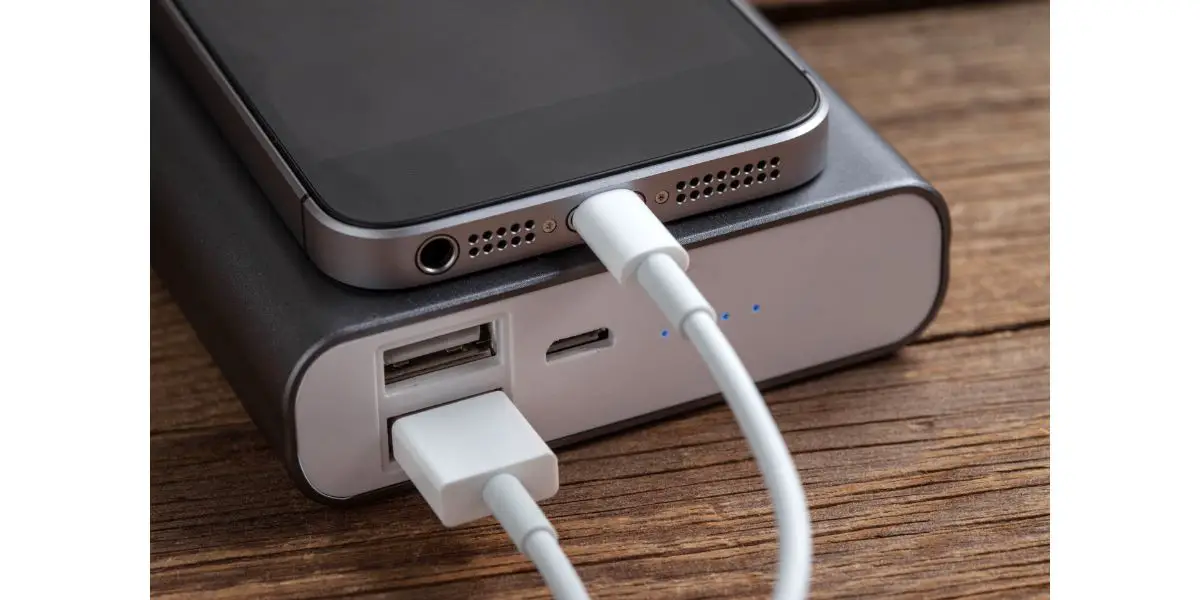Disclaimer: This post may contain affiliate links, meaning we get a small commission if you make a purchase through our links, at no cost to you. For more information, please visit our Disclaimer Page.
Power banks are one of the most helpful accessories today. You can think of them as giant batteries that power the smaller batteries in your devices. You can carry them anywhere and use them when you need to charge. However, you don’t have to use them often because you can charge your devices at home or near a reliable energy source.
Moreover, manufacturers have made new batteries longer lasting to avoid charging your devices all too often during the day. So even if you don’t use your power bank often, it’s still invaluable when you’re on the go. And taking care of them ensures you can use them for a long time.
With that in mind, you might wonder about the best practices for taking care of them. In this article, we will offer some insights into this question. We’ll also touch on how long power banks last and how you can extend their life.
Table of Contents
How Do You Properly Take Care of a Power Bank? (3 Ways)
There is no single official rule for power bank care and usage. However, many manufacturers offer recommendations across their product lines when you check their manuals.
At its most basic level, the power bank is a massive battery within a hard shell that does not power a dedicated device. Thanks to its composition, some things you can do to take care of it will be similar to how you would keep the batteries in your devices safe and valuable.
1. Don’t Overcharge or Overdrain
Don’t let your power bank drain to zero too often. But, conversely, don’t overcharge it all the time. Taking the unit back up to this level should be fine after you’ve discharged most of its energy. However, it is not advisable to leave it plugged because it cannot self-discharge some of that energy.
Most batteries undergo much strain when people constantly keep them close to the bottom or top of their limits. To keep your power bank on a more even keel, allow it to get low without reaching zero.
You can also unplug it once you know it has charged itself fully. While adaptive charging is a thing for many devices, it is not as widespread for things like power banks.
Leaving this unit connected to a reliable power source means it may be unable to self-discharge. In addition, if it spends too long at total capacity, your power bank may hurt its ability to keep its charge ceiling.
It would mean it has less energy to give to devices before running out. Although this can happen naturally as the unit ages, you can increase the shrinkage prematurely when you let it sit on a charger all the time.
If you allow the power bank to decrease to zero for too long, it might fail to charge up again. All power banks have minimum thresholds that manufacturers recommend they maintain. Most models can withstand overdraining, but all of them will wear out if they spend too long in this state.
2. Use It Periodically
This step can help mitigate some of the major pitfalls we mentioned earlier. For example, many people think it’s OK not to use power banks for many months. But, on the contrary, they still need regular use to function correctly.
Draining the power bank’s battery by a few percentage points each month has a lot of benefits. For one, the power bank won’t malfunction prematurely due to overcharging. It also helps you familiarize yourself with your power bank’s controls, speed, and capacity ratings, making it easier for you to use.
It will be easier for you to notice if the unit is malfunctioning. Of course, you should always keep some power in your bank, but using it regularly keeps its components working.
3. Avoid Impacts On the Unit
Power banks don’t have delicate moving parts like many other electronics. They are thick or heavy, resulting in misconceptions that they can withstand hard impacts. Although the lack of moving parts does help the power bank avoid some kinds of damage, it still has electronic components.
Dropping or hitting the device on a hard surface could cause some of these components to stop working correctly. Additionally, the battery itself might crack or swell, leading to performance problems and dangerous situations.
Is It OK To Use a Power Bank Every Day?
Using a power bank daily is OK, but it comes with a few caveats. Each full use of your power bank consumes one of its charge cycles throughout its life. You can no longer use the product when you exhaust all the charge cycles. Because developers make power banks, you would need to get a new one.
On a related note, charging the same device every day means you are not letting their batteries run down enough. Keeping things like your phone or tablet fully charged 100 percent all the time could shorten their battery life. While using a power bank daily might be OK, you can keep it going longer if you use it sparingly.
Do Power Banks Degrade?
Yes. All batteries degrade over time, and a power bank is a big battery. Every manufacturer rates its power banks with a minimum number of charge cycles. Theoretically, each product should be able to last until you entirely use the recommended charge cycles.
Temperatures, overcharging, discharging, and the number of times per day you need to plug in or unplug your battery significantly affect how quickly it degrades over the years. As a result, even under normal use conditions, a power bank will likely lose a tiny fraction of its total capacity with each passing year.
How Do You Store a Power Bank When Not in Use?
It’s OK to keep your power bank in open or cluttered areas. However, keeping the following guidelines in mind is a good idea to keep your accessory safe and in working order.
- Always store your power bank with at least some charge in the battery. Again, depending on its power levels, aiming for at least half the total capacity would be an excellent benchmark.
- Keep it out of extreme heat or cold to avoid physical problems with the battery. The manufacturer should have storage temperature recommendations you can follow.
- It is best to store it outside any container. It allows you to check it for any signs that the battery might be cracking or swelling.
Do Power Banks Lose Charge When Not in Use?
Yes. Power banks lose their charge even when not in use. BUT… It mainly depends on 2 factors, quality and time spent idle.
Now let’s talk about them in detail:
1. Quality
Whether a power bank will lose its charge even when you’re not using it depends on its quality. It will also affect how fast it drains.
A high-quality power bank will keep its charge even when not used for many months. Conversely, a low-quality power bank loses its charge much faster, even when not used.
Keep in mind that even high-quality power banks can have defects. If yours does, check with the manufacturer as soon as possible to see if you quality for a warranty.
2. Idle Time
Yes, a high-quality power bank is still OK after months of lying idle. However, power banks run on lithium cells. These battery types continue to self-discharge when not used for more than six months.
Not only will they lose their charge, but it will affect their charging capacity. Therefore, as mentioned above, we highly recommend using and charging your power banks at least once a month.
Can I Keep a Power Bank in My Car?
Generally, we do not recommend storing a power bank in your car. Although it’s OK to leave your power bank when the weather is mild, checking the storage temperature levels is advisable. Keep in mind that the temperature inside the car can get to a more extreme level than outside.
Extreme temperatures are not kind to batteries. If your car gets too hot, the power bank can swell, which may crack the casing. The further buildup of heat could lead to the battery melting or exploding. If things get too cold, the battery might fail to charge back up later.
How Long Do Power Banks Last?
The lifespans for power banks operating under normal use conditions may vary from manufacturer or model to the next. If you’re interested in a particular power bank, check the user manual for that device.
Typically, at least a portion of this time will be something the manufacturer covers under its warranty. A power bank of decent quality from a reputable brand could last for at least five years. With proper care and usage, such a device might last up to 15 years.
5 Ways To Increase the Life of a Power Bank
1. Using in High Temps
Avoid using your power bank at high temperatures. Storing the unit in such temperatures can be a problem, but using it actively can cause it to take on heat much more quickly. It could also lead to issues with the battery overheating.
Operating Devices While Charging Them
Don’t use the device you’re charging with the power bank simultaneously. The bank and the machine you might want to use will heat up during the charging process. Either one could take damage from putting the components inside under stress when they are already building heat just from charging.
2. External Chargers
If possible, it is best to avoid chargers other than the one that comes with your power bank. Some external chargers have inferior parts or potential defects in their manufacturing processes.
Either problem could cause issues with your battery. If you need an unofficial charger, try to find one that the tech community rates as suitable for your power bank model.
3. Metallic Items
Although power banks have protective shells, some metallic items may negatively affect the charging components inside. So if you’re carrying your power bank with you, consider keeping it away from metallic objects that could interfere with it.
3. Regular Cleaning
Power banks don’t have moving parts on the outside of their cases. However, they do have various ports for input and output. To ensure there are no problems with the connections your power bank makes with your devices, try to keep these ports clean and free of any debris that could obstruct them.
Conclusion
Most power banks are robust, but they are still batteries. To ensure yours can keep its total capacity for many years, it is a good idea to follow some of our tips for the care and cleaning of these accessories. Even so, every power bank will lose a bit of its overall charge each year, mainly if you often go through many charges and discharge cycles.


